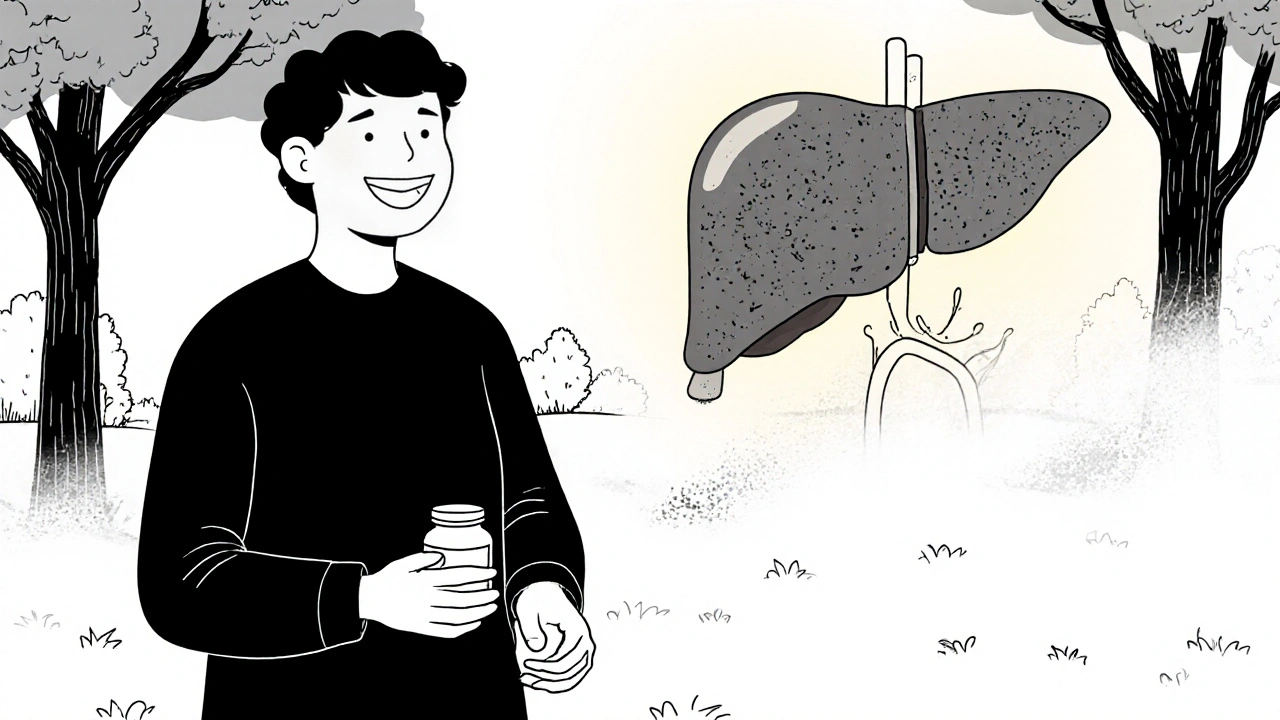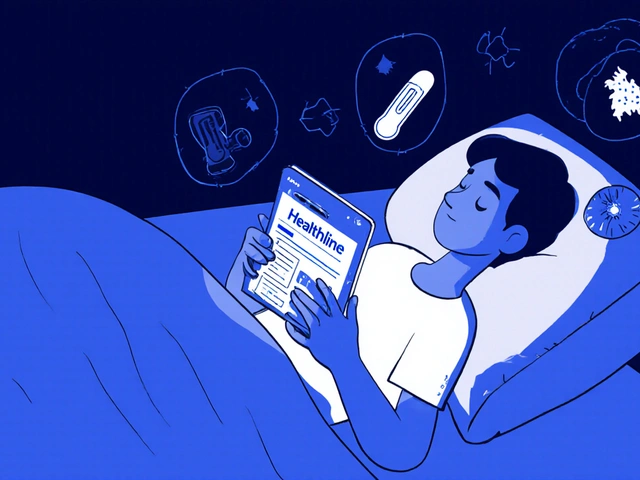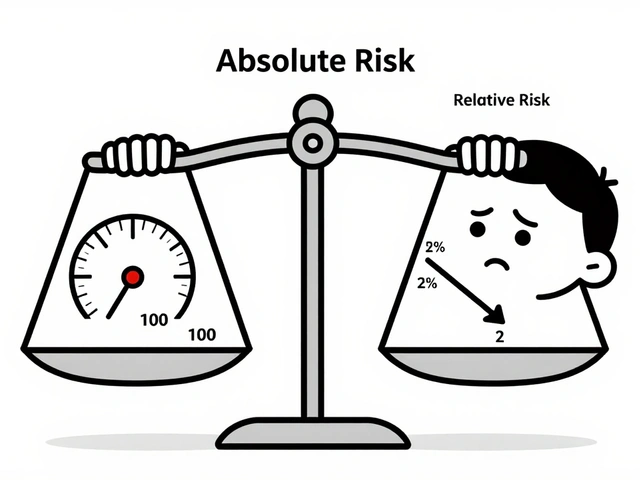For decades, chronic hepatitis C was a silent killer. Many people carried the virus for years without symptoms, only to wake up one day with cirrhosis, liver failure, or even liver cancer. The old treatments? A brutal 6 to 12 months of injections, crushing fatigue, depression, and flu-like symptoms-with less than half a chance of success. That’s not medicine. That’s punishment.
Today, it’s completely different. You can now cure hepatitis C in 8 to 12 weeks with a single pill, once a day. No needles. No hospital visits. Most people feel fine the whole time. And the best part? It doesn’t just kill the virus-it gives your liver a real shot at healing.
How the New Antivirals Work
The game-changer is called direct-acting antivirals, or DAAs. These aren’t like the old interferon drugs that tried to boost your immune system. DAAs go straight for the virus. They attack three weak spots in hepatitis C’s replication process:
- NS3/4A protease inhibitors (like glecaprevir) stop the virus from cutting its proteins into usable pieces.
- NS5A inhibitors (like velpatasvir and pibrentasvir) mess with how the virus assembles itself.
- NS5B polymerase inhibitors (like sofosbuvir) block the virus from copying its RNA.
Modern treatments combine two or three of these into one pill. That’s why drugs like Epclusa (sofosbuvir/velpatasvir) and Mavyret (glecaprevir/pibrentasvir) work against every major strain of hepatitis C-no need to test your genotype anymore. This is called pan-genotypic treatment, and it’s now the global standard.
These pills are taken orally. No injections. No interferon. No hospital stays. Just swallow one tablet a day. Most people finish treatment feeling exactly the same as they did when they started-maybe a little tired, maybe a headache, but nothing that stops them from working, driving, or spending time with family.
Cure Rates That Change Everything
Before DAAs, cure rates hovered around 50%. For some genotypes, it was as low as 40%. That meant half the people who went through the grueling treatment still had the virus afterward.
Now? Over 95% of patients are cured. In some studies, it’s 97% to 99%. That’s not just better. That’s revolutionary.
And it’s not just for healthy people. People with HIV co-infection? Cure rates jump from 30% with old treatments to 95% with DAAs. People with cirrhosis? Still over 90% cure. Even those who’ve had liver transplants? 94% clear the virus after DAA treatment-compared to 25% with interferon.
The CDC says this isn’t just a medical win. It’s a public health breakthrough. When you cure hepatitis C, you stop transmission. You prevent liver cancer. You save lives.
How Your Liver Heals After the Virus Is Gone
Getting rid of the virus isn’t the end. It’s the beginning of healing.
Chronic hepatitis C slowly scars the liver. That’s fibrosis. Left unchecked, it becomes cirrhosis-permanent, irreversible damage. But once the virus is cleared, the liver doesn’t just sit there. It starts repairing itself.
Studies from the Mayo Clinic show that after successful DAA treatment:
- 95% of patients stop getting worse-fibrosis progression halts completely.
- 70% see actual fibrosis regression within five years.
- Scar tissue can shrink, sometimes dramatically.
One man in a patient survey said, “I finally felt like I could date again. I could marry. I could have kids.” That’s not just about being virus-free. That’s about reclaiming your future.
Even people with advanced cirrhosis benefit. Their risk of liver failure drops by 70%. Their risk of liver cancer drops by 50%. That’s not a small gain. That’s life-changing.

What About Side Effects?
Let’s be clear: DAAs are not magic. But they’re close.
Over 90% of patients report no significant side effects. The most common? Mild fatigue in the first week. Maybe a headache. A little nausea. Nothing that requires stopping treatment.
Compared to the old interferon regimens-where people lost hair, got depressed, couldn’t work, or had to quit their jobs-this is like switching from a sledgehammer to a scalpel.
The only real risk? Drug interactions. About 15% of patients take other meds that can interfere-like certain epilepsy drugs, HIV treatments, or statins. That’s why your doctor checks your full list of medications before prescribing. It’s simple to fix: swap one pill for another. No big deal.
Cost and Access: The Real Hurdle
Yes, the pills used to cost $94,500 for a 12-week course. That was the price of Sovaldi in 2013. It broke health systems.
Today, it’s better. In the U.S., a full course still runs around $74,700-but insurance usually covers it. Most private insurers and Medicare approve treatment without hassle now. Medicaid coverage varies by state, but most states cover it for all stages of liver disease.
The bigger issue? Getting tested in the first place. Only 20% of people with hepatitis C know they have it. That’s the real crisis.
In low- and middle-income countries, the cost was a barrier. But now, generic versions are available for as little as $50 per treatment course in places like India, Egypt, and Pakistan. Gilead and other manufacturers are pushing to reach 1 million more patients in these regions by 2025.
And in places like Australia and Canada, treatment is free or low-cost through public health systems. If you’re in the U.S., patient assistance programs cover 70% of uninsured people. You don’t need to be rich to get cured.
Who Can Get Treated Now?
Everyone. Seriously.
WHO updated its guidelines in 2022 to say: treat everyone with chronic hepatitis C, regardless of liver damage. That includes:
- People with cirrhosis
- People with HIV
- People with kidney disease
- People who inject drugs
- People who’ve had liver transplants
- Children as young as 3 years old
Primary care doctors can prescribe these drugs now. You don’t need a liver specialist. If your doctor knows you have hepatitis C, they can start treatment. No referral needed.
And if you’ve tried treatment before and failed? There’s still hope. Vosevi (sofosbuvir/velpatasvir/voxilaprevir) is designed specifically for people who didn’t respond to earlier DAAs. It works.
What’s Left to Solve?
The science is solved. The drugs work. The cure is real.
What’s still broken? Access.
Only 60% of diagnosed people in rich countries get treated. In poor countries, it’s 15%. That’s not a drug problem. It’s a system problem.
Reinfection is another issue. Among people who inject drugs, 5% to 10% get hepatitis C again after being cured. That’s why harm reduction-clean needles, testing, and ongoing support-is just as important as the pills.
And there’s still a small group-1% to 5%-who fail multiple treatments. Researchers are working on new drugs for them. But for now, those cases are rare.
The goal? WHO wants to eliminate hepatitis C as a public health threat by 2030. That means 90% fewer cases. We’re on track-but only if we find the people who don’t know they’re infected.
What You Need to Do Next
If you’ve ever had a blood transfusion before 1992, used injectable drugs, gotten a tattoo in an unregulated setting, or had unprotected sex with someone who had hepatitis C-you should get tested.
It’s a simple blood test. No needles. No pain. Results in days.
If you test positive, don’t wait. Don’t think, “I feel fine.” Hepatitis C doesn’t make you feel sick until it’s too late. But if you catch it now, you can be cured in three months. Your liver can heal. Your life can change.
And if you’ve already been treated? Get your liver checked yearly. Even after cure, some people need monitoring, especially if they had cirrhosis. But you’re no longer contagious. You’re no longer at risk of passing it on. You’re free.
This isn’t just medicine. It’s redemption.
Can hepatitis C come back after treatment?
Once you achieve sustained virologic response (SVR)-meaning the virus is undetectable 12 weeks after finishing treatment-it’s considered cured. The chance of the virus returning on its own is less than 1%. But reinfection is possible if you’re exposed again, especially if you continue injecting drugs or have unprotected sex with someone who has hepatitis C. Regular testing is recommended for people at ongoing risk.
Do I still need liver scans after being cured?
Yes, if you had advanced scarring (cirrhosis) before treatment. Even after cure, your risk of liver cancer remains slightly elevated for several years. Doctors recommend annual ultrasound scans and blood tests (like AFP) for at least 5 years after treatment. If you had no cirrhosis, you typically don’t need ongoing liver monitoring unless you have other risk factors like heavy alcohol use or fatty liver disease.
Are generic DAA drugs as effective as brand-name ones?
Yes. Generic versions of sofosbuvir, velpatasvir, and glecaprevir/pibrentasvir have been proven in clinical trials to be just as effective as the brand-name drugs. They contain the same active ingredients, meet the same manufacturing standards, and achieve the same cure rates-over 95%. In countries with access to generics, the cost has dropped from tens of thousands to under $100 per course.
Can I drink alcohol after being cured of hepatitis C?
You can, but it’s not recommended. Even after cure, your liver may still have some scarring or inflammation. Alcohol adds stress to your liver and can lead to fatty liver disease or accelerate fibrosis. For long-term liver health, it’s best to avoid alcohol entirely. If you choose to drink, limit it to very small amounts and talk to your doctor first.
Is hepatitis C treatment covered by insurance?
In most cases, yes. Private insurance, Medicare, and Medicaid in most U.S. states cover DAA treatment without restrictions based on liver damage stage. Some insurers still require prior authorization or proof of current infection (HCV RNA test), but they rarely deny treatment outright anymore. Patient assistance programs from drug manufacturers cover costs for uninsured or underinsured patients-often 100%.
Can I get hepatitis C again after being cured?
Yes. Being cured doesn’t give you immunity. You can be reinfected if you’re exposed to the virus again-through sharing needles, unsterile tattoos, or unprotected sex with an infected partner. People who inject drugs have a 5% to 10% annual reinfection rate. That’s why harm reduction services, regular testing, and education are critical parts of eliminating hepatitis C.






Sammy Williams
Just finished my 12-week course last month. Felt fine the whole time. No nausea, no fatigue, just took my pill and went about my day. My doctor said my liver enzymes are back to normal. I’m not even sure what all the fuss was about before.
Donald Frantz
Let’s not romanticize this. The drug companies made billions while people died waiting for access. The science is impressive, but the system that priced these at $80k is still broken. Cure rates don’t fix greed.
Julia Strothers
They say it’s a cure, but what’s really happening? They’re pushing these pills because they want to erase the virus from the stats so they can stop funding harm reduction programs. Next thing you know, clean needles will be ‘unaffordable’ and they’ll blame users for getting reinfected. This is a distraction.
Simone Wood
DAAs are a miracle, sure-but have you seen the paperwork? My insurer made me jump through 17 hoops just to get the script. They wanted proof I wasn’t ‘actively using’ (whatever that means), a letter from my therapist, and a signed affidavit that I won’t share needles again. Like I’m a criminal.
Corra Hathaway
OMG I’m crying right now. My dad got cured last year. He’s been sober for 3 years and finally went on that road trip he always talked about. He’s baking pies again. This isn’t just medicine-it’s second chances. 🙏
Nikhil Purohit
In India, I got the generic version for $60. Same pills, same results. My cousin in the US paid $15k out of pocket before insurance kicked in. The disparity is insane. We need global access, not just miracle drugs in rich countries.
Debanjan Banerjee
Clarifying a common misconception: SVR12 means cure, but fibrosis regression takes years. A 70% regression rate doesn’t mean everyone’s liver becomes pristine. Monitoring is still essential, especially if you had cirrhosis. Don’t assume you’re ‘back to normal’ after treatment ends.
Noah Fitzsimmons
Oh wow, so now we’re supposed to believe Big Pharma gave a damn about us? They didn’t lower prices because they’re nice-they got sued into it. And now they’re already developing the next ‘miracle’ drug for the 5% who fail. Profit cycle: reset.
Florian Moser
If you’ve ever been told you’re ‘too far gone’ for treatment, please know: you’re not. My uncle had stage 4 cirrhosis. They told him he’d need a transplant. He took Mavyret. Two years later, his liver scan looked like a 35-year-old’s. He’s alive because he didn’t give up. You can too.
Swati Jain
Let’s be real-most people don’t even know they have it. My sister got diagnosed after a routine blood draw. She thought she was fine because she didn’t ‘feel sick.’ That’s the silent killer. Get tested. It’s one needle. Your future self will thank you.
Chris Vere
Life is strange. We spend decades fearing death from invisible things. Then one day, science gives us a pill that erases it. But we still fight over who gets it. Maybe the virus wasn’t the real enemy all along.
Shawn Sakura
Just got my results back-undetectable! I’ve been clean for 2 years and still thought I’d never be able to have kids. Now I’m thinking about it. This is real. I’m not just surviving anymore. I’m living. Thank you to everyone who fought for access.
jim cerqua
They call it a cure but it’s just a corporate PR stunt wrapped in a lab coat. The same people who made billions off interferon are now making billions off DAAs. They don’t care if you’re cured-they care if you’re paying. And if you’re poor? Too bad. The system didn’t change. It just got shinier.
Meanwhile, people are still getting infected because testing centers are closed, harm reduction is defunded, and no one talks about reinfection like it’s a personal failure. It’s not. It’s a public health failure.
Don’t celebrate the pill. Celebrate the people who made it affordable. And then demand they make the next one cheaper.
And yes, I’m still angry. And I will keep being angry until no one has to choose between rent and a pill.
Paula Jane Butterfield
As a nurse who’s seen this play out for 20 years-I can tell you the real miracle isn’t the drug. It’s the fact that we finally treat people like humans. No more gatekeeping. No more ‘prove you’re worthy.’ Just test. Treat. Heal. That’s all.